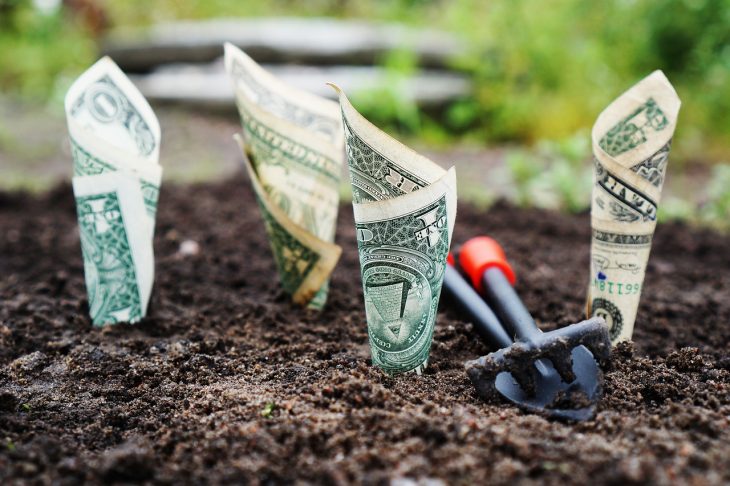
Image by Kris from Pixabay
One of the most compelling reasons people turn to homesteading is the potential for significant savings. But just how much can you save by adopting a homesteading lifestyle? From gardening to energy, we’re breaking down the numbers. So let’s get to it with LandCentral’s How Much Can You Really Save With Homesteading? A Breakdown of Savings:
1. Food Costs
The most immediate and tangible savings from homesteading comes from growing/raising your own food. By cultivating fruits, vegetables, and herbs, and raising livestock for meat, dairy, and eggs, you can drastically reduce your grocery bills. Don’t believe us? Check it out:
- Vegetable Garden: A well-planned vegetable garden can yield hundreds of dollars’ worth of produce annually. According to some estimates, a garden can save anywhere from $500 to $2,000 per year, depending on the size and efficiency of your garden.
- Fruit Trees and Berries: Planting fruit trees and berry bushes requires an initial investment upfront but can provide a steady supply of fruit for years to come. It’s sort of a plant it and forget it approach. This could potentially save you another $200 to $800 annually.
- Livestock: Raising chickens for eggs and meat, goats for milk and cheese, or pigs for pork can also lead to substantial savings. A small flock of chickens might reduce your egg and meat costs by $300 to $500 per year, while dairy goats could save you around $200 to $400 annually on milk and cheese.
2. Utilities
Homesteading often involves energy-saving practices and alternative sources of power. Sustainability is kind of the vibe, after all. This means you can reduce your utility bills significantly.
- Solar Power: Installing solar panels can be a hefty upfront investment, but they often lead to substantial savings on electricity bills. With tax credits and incentives, the return on investment for going solar can be seen in 5 to 10 years, with potential savings of $1,000 to $3,000 annually depending on your location and energy usage.
- Wood Heat: We’re going old school with this one. Using a wood stove or fireplace for heating can significantly lower your heating costs, especially if you have access to free or low-cost firewood. Savings can range from $500 to $1,500 per year compared to traditional heating methods.
- Water Conservation: This one only works if you live in a region that gets actual rainfall, but implementing rainwater harvesting systems and water-saving fixtures can reduce your water bills. Savings here might be around $100 to $300 annually, depending on your water usage and local rates.
3. DIY Projects and Repairs
Homesteading requires a bit of hands-on skills. Homesteaders often take on DIY projects and repairs, which can lead to substantial savings compared to hiring professionals.
- Home Maintenance: Regular maintenance tasks such as gardening, minor repairs, and renovations can save hundreds to thousands of dollars each year. For instance, simple repairs and upkeep that might cost $1,000 if hired out could cost you just a fraction of that if done yourself.
- Crafting and Preservation: Homemade goods like jams, pickles, and other preserved foods can save money compared to buying similar products at the store. Depending on what you make, these savings could add up to $200 to $500 annually.
4. Reducing Waste
Homesteaders often practice waste reduction techniques such as composting and recycling, which can save money while also benefitting the environment.
- Composting: By composting kitchen scraps and yard waste, you reduce the amount of garbage you produce, which can lower waste disposal costs. This could translate to savings of $100 to $200 per year!
- Recycling: Saving and reusing materials can reduce the need for new supplies. Whether it’s using old jars for storage or repurposing wood for projects, these practices can lead to additional savings of $50 to $150 annually.
5. Self-Reliance and Emergency Preparedness
Homesteading fosters self-reliance and can provide savings in emergency situations.
- Emergency Supplies: This one may seem like a stretch, but by stockpiling essentials and being prepared for emergencies, you can avoid the higher costs of last-minute purchases or shortages. This preparedness can save you money and provide peace of mind during crises.
Total Savings
When you tally it all up, homesteading can offer substantial financial benefits. For a dedicated homesteader, savings could range from $2,000 to $6,000 or more per year, depending on your practices, scale, and initial investments. The exact amount will vary based on factors like your location, lifestyle, and how extensively you adopt homesteading practices. And remember, there’s upfront costs to get started, but overtime, you’ll see your hard work pay off as you rely less and less on the grid.
Final Thoughts
While homesteading requires time, effort, and sometimes a significant initial investment, the potential for financial savings is considerable. Beyond the monetary benefits, many find that the increased self-sufficiency and personal satisfaction are invaluable. Whether you’re growing your own food, reducing energy use, or honing your DIY skills, homesteading can be a rewarding way to save money and enrich your life.
Ready to start your homesteading journey? Check out these LandCentral favorites for the perfect plot of homesteading land!